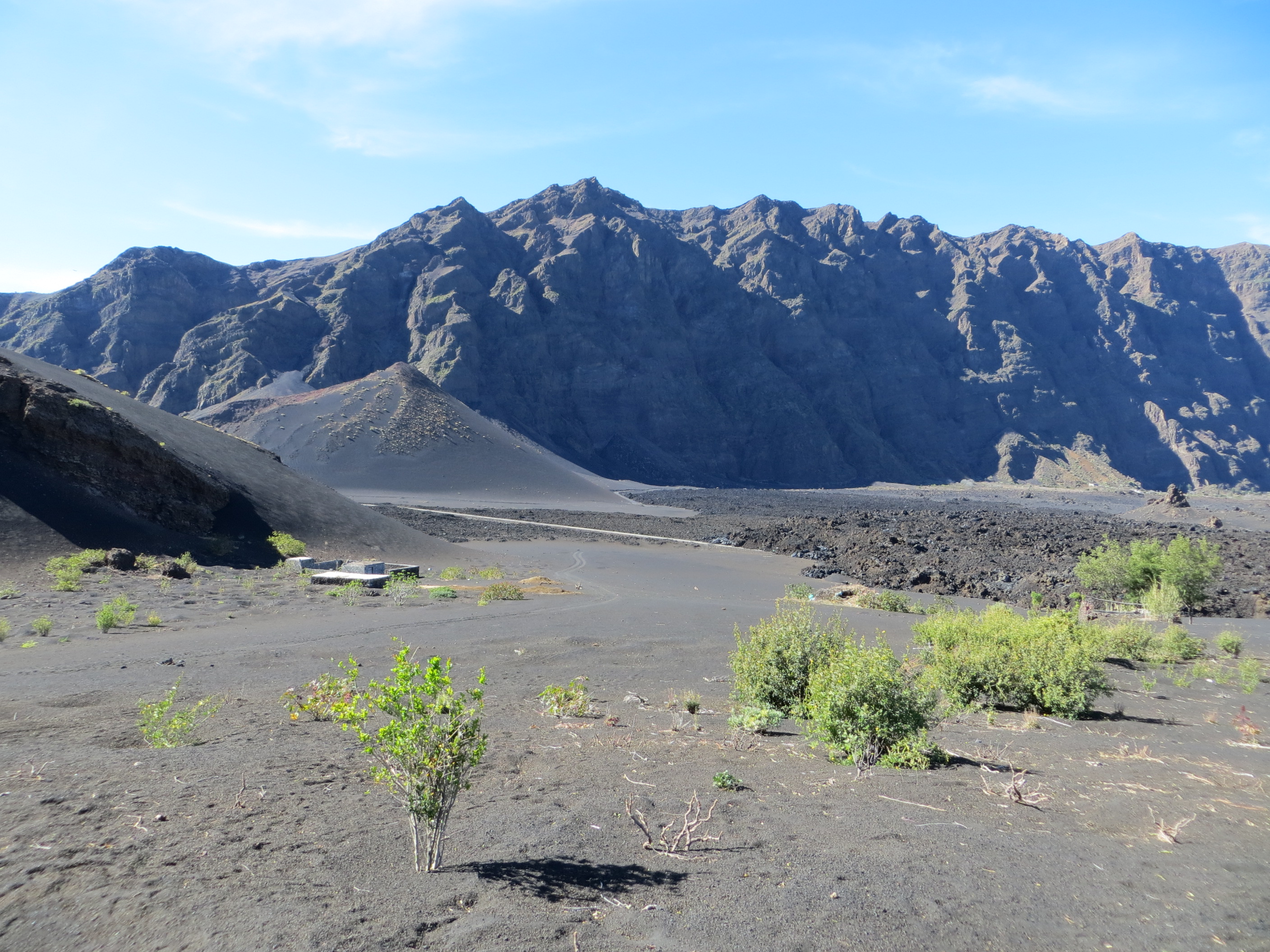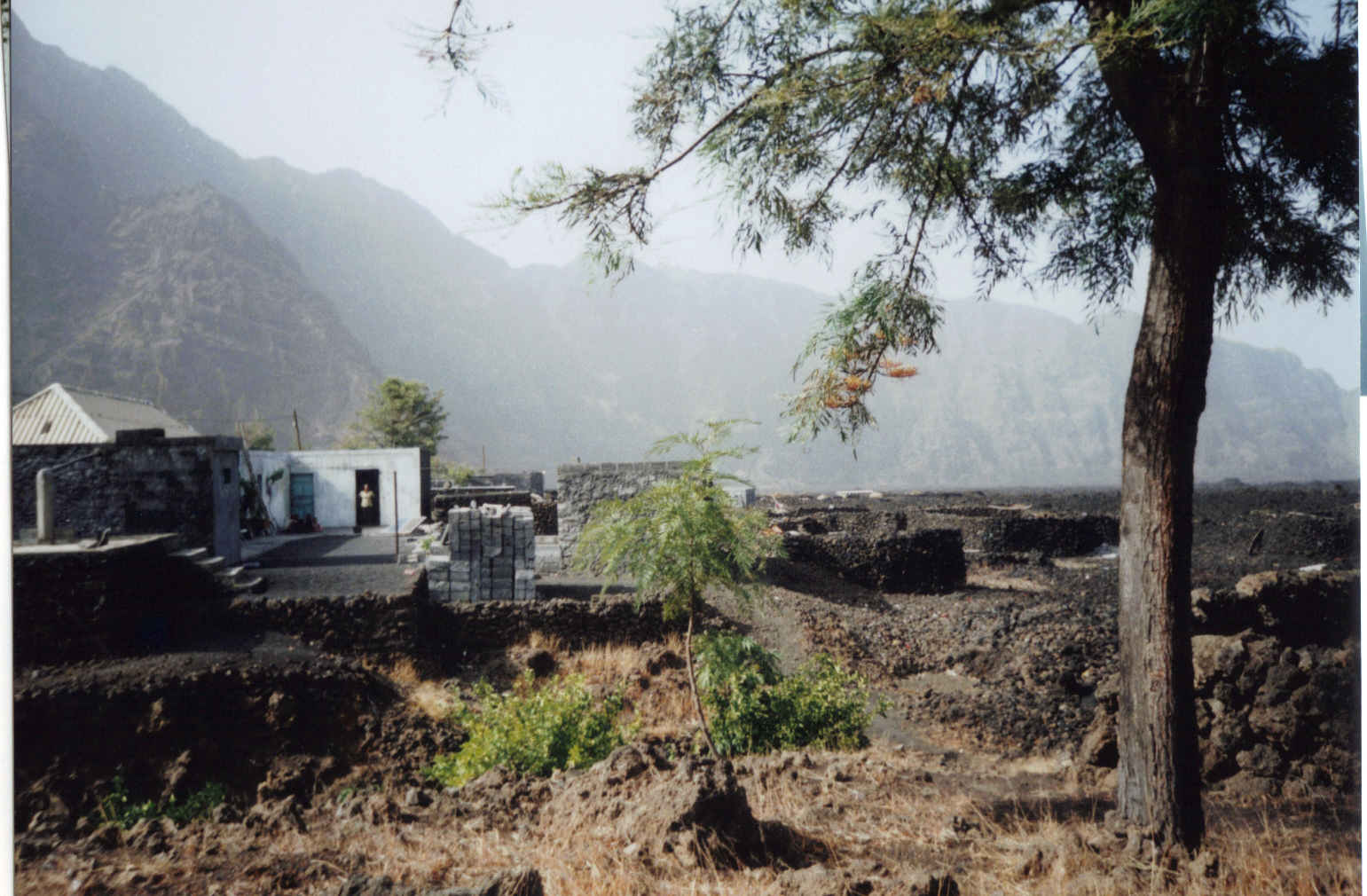|
Bordeira (Fogo)
Bordeira is a semicircular mountain in the middle of the island Fogo. It is a crater rim, up to 1 km high, formed by a prehistoric collapse of the volcano Pico do Fogo. At a maximum elevation of , it is the second highest point in the nation behind Pico do Fogo. The name literally means the "border". It forms part of Fogo Natural Park. Opening to the east, it effectively protects the northern, western and southern part of the island against lava flows from the volcano. The settlement Chã das Caldeiras lies at the foot of Bordeira, in the caldera. The east side of the Bordeira cliff is much steeper than the west side. See also *List of mountains in Cape Verde This is a list of mountains in Cabo Verde: List See also *Lists of mountains by region *Geography of Cape Verde Notes External links * {{Cape Verde topics Mountains of Cape Verde, * Lists of mountains by country, Cape Verde Lists ... References External links * {{Fogo Bordeira Bordeira ... [...More Info...] [...Related Items...] OR: [Wikipedia] [Google] [Baidu] |
List Of Mountains In Cape Verde
This is a list of mountains in Cabo Verde: List See also *Lists of mountains by region *Geography of Cape Verde Notes External links * {{Cape Verde topics Mountains of Cape Verde, * Lists of mountains by country, Cape Verde Lists of landforms of Cape Verde, Mountains Lists of mountains of Africa, Cape ... [...More Info...] [...Related Items...] OR: [Wikipedia] [Google] [Baidu] |
Fogo, Cape Verde
Fogo (; Portuguese language, Portuguese for "fire") is an island in the Sotavento Islands, Sotavento group of Cape Verde in the central Atlantic Ocean. Its population is 35,837 (2015),Cabo Verde, Statistical Yearbook 2015 Instituto Nacional de Estatística (Cape Verde), Instituto Nacional de Estatística with an area of 476 km2. It reaches the highest altitude of all the islands in Cape Verde, rising to above sea level at the summit of its active volcano, Pico do Fogo. History The eastern side of Fogo collapsed into the ocean 73,000 years ago, creating a tsunami 170 meters high which struck the nearby island of Santiago, Cape Verde, Santiago. Fogo was discovered in 1460 by Genoa, Genovese captain Antóni ...[...More Info...] [...Related Items...] OR: [Wikipedia] [Google] [Baidu] |
Stratovolcano
A stratovolcano, also known as a composite volcano, is a typically conical volcano built up by many alternating layers (strata) of hardened lava and tephra. Unlike shield volcanoes, stratovolcanoes are characterized by a steep profile with a summit crater and explosive eruptions. Some have collapsed summit craters called calderas. The lava flowing from stratovolcanoes typically cools and solidifies before spreading far, due to high viscosity. The magma forming this lava is often felsic, having high to intermediate levels of silica (as in rhyolite, dacite, or andesite), with lesser amounts of less viscous mafic magma. Extensive felsic lava flows are uncommon, but can travel as far as 8 km (5 mi). The term ''composite volcano'' is used because strata are usually mixed and uneven instead of neat layers. They are among the most common types of volcanoes; more than 700 stratovolcanoes have erupted lava during the Holocene Epoch (the last 11,700 years), and many ol ... [...More Info...] [...Related Items...] OR: [Wikipedia] [Google] [Baidu] |
Pico Do Fogo
Pico may refer to: Places The Moon * Mons Pico, a lunar mountain in the northern part of the Mare Imbrium basin Portugal * Pico, a civil parish in the municipality of Vila Verde * Pico da Pedra, a civil parish in the municipality of Ribeira Grande, São Miguel, Azores * Pico Island, the largest island in the Central Group of the Azores archipelago * Mount Pico (Montanha do Pico), the distinctive stratovolcano that stands on the island of Pico * Pico da Vara, the highest mountain on the island of São Miguel, Azores United States * M. Pico Building, a building in Lafayette County, Florida * PICO Building (Sanford, Florida) * Camp Pico Blanco, a summer camp in Monterey County, California * Pico Mountain, a ski resort in Rutland County, Vermont * Pico Boulevard, a major street in Los Angeles, California * Pico-Union, Los Angeles, a neighborhood in Los Angeles * Pico, California, an unincorporated community now part of Pico Rivera, California * Pico School Distric ... [...More Info...] [...Related Items...] OR: [Wikipedia] [Google] [Baidu] |
Fogo Natural Park
Fogo Natural Park () is a protected area located on Fogo Island in Cape Verde, an archipelago nation in the central Atlantic Ocean. Established in 2003, the park encompasses an area of , representing 17.8% of the island's total landmass. It is geographically distributed across the municipalities of Santa Catarina do Fogo, Mosteiros, and São Filipe. The park's central feature is the active stratovolcano Pico do Fogo, along with its caldera (Chã das Caldeiras) and crater rim (Bordeira), as well as the Monte Velha forest. The natural park is vital for both its unique geological features and its biodiversity, particularly for endemic plant species and as an Important Bird Area. The volcano's eruptions, most recently in 2014-2015, have significantly shaped the landscape and influenced the lives of the communities living within the caldera. Geography Fogo is a protected area located on Fogo Island in Cape Verde, an archipelago nation in the central Atlantic Ocean. Fogo Natural ... [...More Info...] [...Related Items...] OR: [Wikipedia] [Google] [Baidu] |
Chã Das Caldeiras
Chã das Caldeiras (; ) is a small community of approximately 700 inhabitants in the crater of the volcano Pico do Fogo on the island of Fogo, Cape Verde. The village consists of two main neighborhoods: Portela and Bangaeira, founded in 1920 and 1917, respectively.Parc Naturel de Fogo – Chã das Caldeiras Tentative list Unesco World Heritage sites . At an elevation of about 1,700 meters, it is the highest village in Cape Verde. It is part of the municipality of Santa Catarina do Fogo. The main organizing body in the village is the ''Associação dos Agricultores de Chã'' (Chã Farmers Association), an agricultural cooperative that holds considerable sway over the local [...More Info...] [...Related Items...] OR: [Wikipedia] [Google] [Baidu] |
Caldera
A caldera ( ) is a large cauldron-like hollow that forms shortly after the emptying of a magma chamber in a volcanic eruption. An eruption that ejects large volumes of magma over a short period of time can cause significant detriment to the structural integrity of such a chamber, greatly diminishing its capacity to support its own roof and any substrate or rock resting above. The ground surface then collapses into the emptied or partially emptied magma chamber, leaving a large depression at the surface (from one to dozens of kilometers in diameter). Although sometimes described as a Volcanic crater, crater, the feature is actually a type of sinkhole, as it is formed through subsidence and collapse rather than an explosion or impact. Compared to the thousands of volcanic eruptions that occur over the course of a century, the formation of a caldera is a rare event, occurring only a few times within a given window of 100 years. Only eight caldera-forming collapses are known to have ... [...More Info...] [...Related Items...] OR: [Wikipedia] [Google] [Baidu] |
Mountains Of Cape Verde
A mountain is an elevated portion of the Earth's crust, generally with steep sides that show significant exposed bedrock. Although definitions vary, a mountain may differ from a plateau in having a limited summit area, and is usually higher than a hill, typically rising at least above the surrounding land. A few mountains are inselberg, isolated summits, but most occur in mountain ranges. mountain formation, Mountains are formed through tectonic plate, tectonic forces, erosion, or volcanism, which act on time scales of up to tens of millions of years. Once mountain building ceases, mountains are slowly leveled through the action of weathering, through Slump (geology), slumping and other forms of mass wasting, as well as through erosion by rivers and glaciers. High elevations on mountains produce Alpine climate, colder climates than at sea level at similar latitude. These colder climates strongly affect the Montane ecosystems, ecosystems of mountains: different elevations hav ... [...More Info...] [...Related Items...] OR: [Wikipedia] [Google] [Baidu] |





